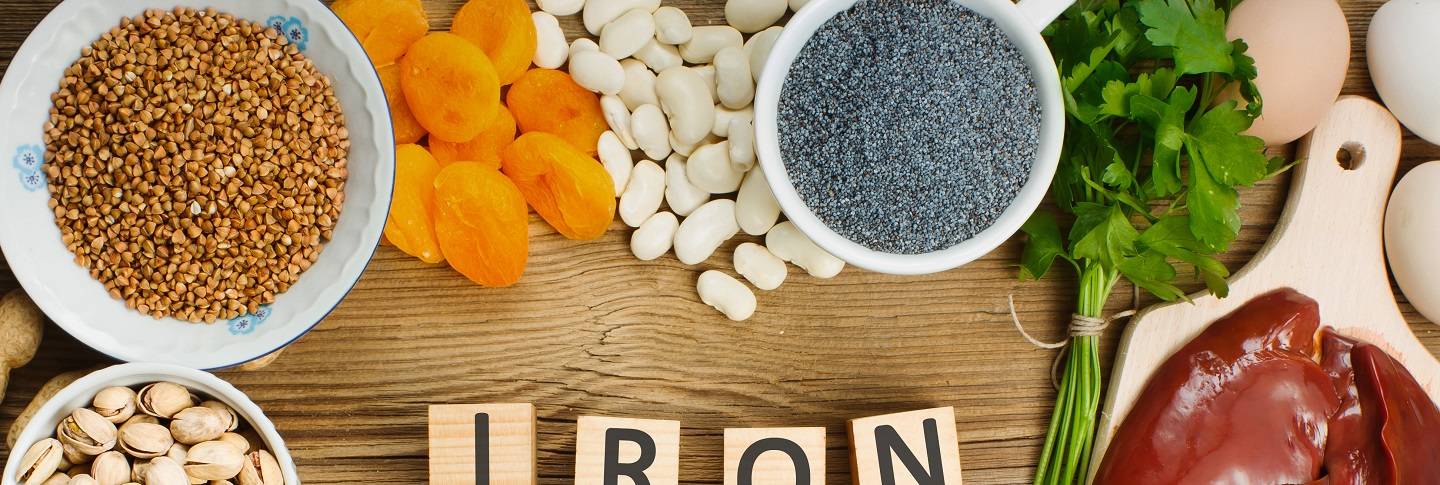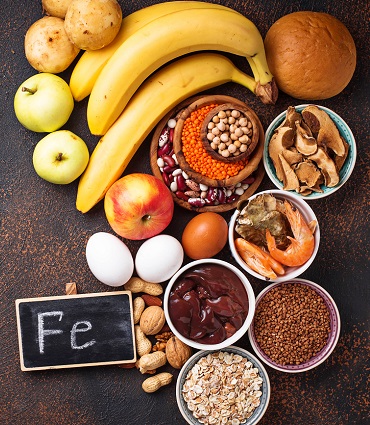
Iron

Description
At the beginning of the 20th century, the French chemist Gabriel Bertrand conducted experiments that demonstrated that iron, along with other minerals, is present in the body in very small quantities and yet is essential for human health.
Iron is a trace element, present in trace amounts in the body. A 70 kg man's body contains about 4 g of iron, and a 60 kg woman's body contains 2.5 g. Iron is mainly absorbed in the small intestine.
In the diet, iron is present in two distinct forms: haem iron and non-haem iron. The former is found in animal products and the latter mainly in plants. Contrary to popular belief, spinach contains relatively little iron, with between 2.5 and 3 mg of iron per 100 g.
For our bodies, this distinction makes sense because the body absorbs heme iron from meat products much better than non-heme iron from plant products.
Haem iron :
- Blood sausage, poultry liver, lamb liver, offal;
- Red and white meat;
- Fish, seafood.
Non-heme iron:
- Wheat germ, pistachio, soya;
- Lentils, chickpeas, dried beans, spinach;
- Eggs;
- Bread, peas, green beans, etc.
An adult man or a post-menopausal woman should have a daily iron intake of about 9 milligrams. A teenager will need 13 milligrams, about 50% more, and a woman of childbearing age will need even more. However, the need for iron is particularly high during pregnancy, when the daily requirement is 25 to 35 mg. This explains why additional iron is often more than necessary for pregnant women.
According to the World Health Organisation (WHO), approximately 25% of the world's population suffers from anaemia (lack of red blood cells). Half of these cases are thought to be due to iron deficiency (iron deficiency anaemia). In North America, iron deficiency anaemia affects about 20% of women, 50% of pregnant women and 3% of men.
In the United States and Canada, certain refined products such as wheat flour, breakfast cereals, pre-cooked rice and pasta are fortified with non-haem iron to prevent potential deficiencies.
The benefits
- Iron contributes to the normal transport of oxygen in the body. This trace element is essential for the production of red blood cells and haemoglobin. It is present not only in the haemoglobin of red blood cells that carry oxygen to all cells, but also in myoglobin, a haemoglobin-like substance that helps muscles store oxygen.
- Iron is essential for the production of adenosine triphosphate (ATP), the body's primary source of energy. Its action on energy metabolism contributes to the reduction of fatigue.
- Iron is also involved in immune defence mechanisms and in the maintenance of cognitive functions. In young children, it has been shown that iron is essential for cognitive development.
- It is during pregnancy that iron becomes even more essential. It is involved in several vital physiological processes, such as the regulation of growth and cell differentiation.
THERASCIENCE's special features
The THERASCIENCE Laboratory has chosen to use iron in the bisglycinate form, which is best absorbed by the body. Indeed, iron bisglycinate offers greater safety and efficiency, better bioavailability and higher absorption than the sulphate form.
For more information, click on iron bisglycinate.

























